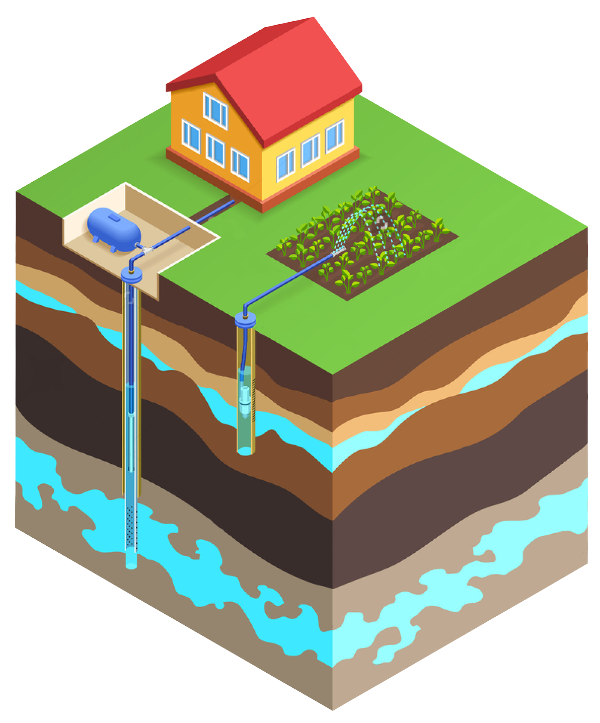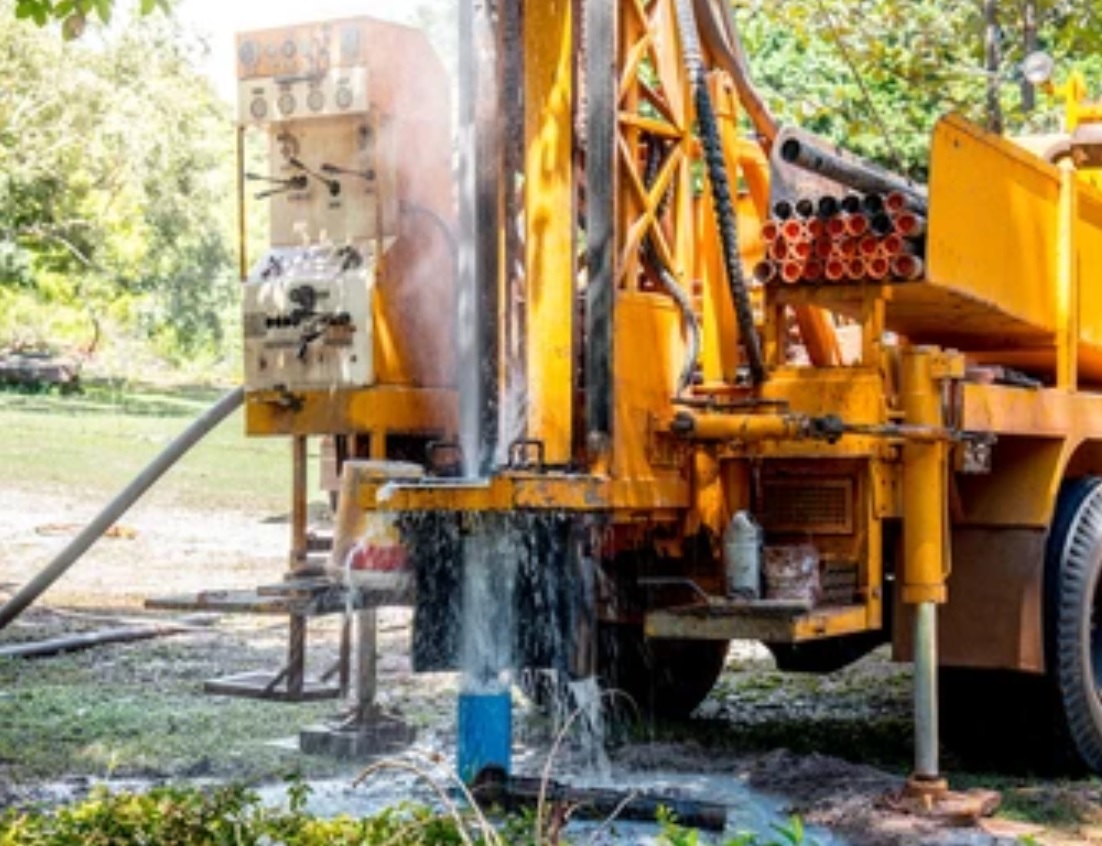How It Works Getting Your Water Bore is as easy as 1,2,3. Let’s Go!
Water Bores in Northern NSW & Southern QLD with Aqua Bore Drilling is easy with our end-to-end management of the whole process from the initial quote, licensing and drilling.

1. Indicative Quote
2. Licensing
3. Drilling & Construction
Backed with our 12 Month Guarantee
Our water bore construction is designed to last 50+ years and is backed with a 12 Month Guarantee.
How It Works
Indicative Quote
Simply contact us and we will provide you with an indicative quote. Our fixed price per metre cost means you know exactly where you stand, whether its drought or rain.
Licensing
We even guide you with all the permits and licenses you need to make it truly headache-free and ensure your legal obligations are met.
Drilling & Construction
We locate a suitable site and construct your water bore to the required depth to access underground water. Once complete, you are issued with a final fixed price invoice.
What You Get
an eco-friendly, sustainable and renewable water source to last a lifetime

Eco-Friendly, Modern Bore Drilling Rigs

Water Bore Construction
Once we find a suitable bore hole location, we then set the rig up and start drilling.
Once we have intercepted suitable water and all cuttings have been cleaned out, the casing is installed and a water sample can be collected for testing. After the casing and screens have been installed a gravel pack is placed between the outside of the casing, and the inside of the hole.
On completion of the drilling process bore development is the next step. This may take from half an hour to several hours, depending on how fine the sand is in the aquifer. In solid formations like basalt, granite and sandstone this may not take long at all. Towards the end of this stage the bore flow is measured.
On completion the space between the casing and the bore hole is sealed with grout. Sealing from the surface down to 6m. This prevents contamination from surface runoff or sub surface contamination from septics.
FAQ
Do I need a license or permit in NSW?
In NSW, bore licensing is not necessary for stock and domestic bores, but you do need to obtain permit from state water.
Do I need a license or permit in QLD?
In QLD, a landholder generally does not need a permit for a stock and domestic bore. It is the drillers obligation to submit to the department or environment and resource management all details of the construction of the bore.
In some areas, licenses are required to drill a water bore including intersection of the sediments of the great artesian basin.
How does a water bore work?
When it rains, water which hits the earth is used by plants, runs off into natural waterways (creeks, rivers) and is evaporated. The remaining water soaks deeper and deeper into the ground under the force of gravity. The water penetrates down through soil, into spaces and cracks in the rocks below the surface – sometimes penetrating to depths of over 1000 metres.
A water bore is installed to reach this natural water which as penetrated deep underground.
Where is a Bore Hole Installed?
The first step is deciding on a suitable site with good access for the drill rig which is mounted on a heavy rigid truck. Usually the best place for a bore is close to power, and out of the way. Many people decide to get a water diviner to choose a good spot with available underground water reserves.
How do you dig a water bore?
Once we locate the most suitable position for your water bore, we then set the rig up and start drilling.
At this stage, we do not yet know the exact depth required to drill to access the underground water reserves.
Once we have intercepted suitable water and all cuttings have been cleaned out, the casing is installed and a water sample can be collected for testing.
After the casing and screens have been installed, a gravel pack is placed between the outside of the casing, and the inside of the hole.
What is your Bore Development Process?
Bore development is a very important part of constructing a water bore. There many different types of screens that can be used. But they will not keep the fine sand from entering the hole without using a gravel pack. By developing the bore it flushes the fine sand from the aquifer surrounding the screen.
Fractured basalt aquifers usually have little sand in them and clean up quite quickly.
We use compressed air to develop a bore, flushing sand and any remaining sidiment from the surrounding aquifer.
Depending on the aquifer this can take anything from half an hour to several hours. It is continued until there is no sign of any sand coming from the bore.
If a bore is developed properly it will increase the life of the pump. If fine sand enters the hole it will eventually fill the hole to the pump level and damage will result.
What paperwork do I receive for my borehole?
Once the borehole digging and construction is complete, the land holder receives a copy of the bore log, which states the standing water level, and all other relevant details required by Office of WaterNSW and the Department of Environmental Resource Management in QLD.
What is a Bore Flow Test?
A bore flow test can be performed when ever a noticeable amount of water is drilled. This test is used as a guide only. It will not give an accurate measurement like a pump test. A bore flow test can be carried out while the bore is being developed.
Due to the water being lifted to the surface with compressed air it creates a form of back pressure on the aquifer, and tends to hold back the water to some extent. Most bores will produce up to 20% more with a proper pump test.
A flow test can be done using a weir board, A weir board is usually made from a flat sheet of steel with a “V” cut in it. There are standard measurements up the “V” notch indicating the Gallons per hour. The higher the water comes up the “V” the more water is available.
A more accurate way of testing flow is by measuring the amount of flow using a bucket and recording the time it takes to fill it.
What is the Standing Water Level?
The standing water level is the height the water rises up the hole when reached by the drill rig. This is the natural level of the water when no pumping is taking place. This level is the distance from the surface of the hole to the top of the water.
Of course this level will drop once pumping commences, but will return to the SWL when the pump is turned off. While pumping is taking place the water in the aquifer will actually form a cone around the bore, the bottom of the cone being towards the screens where the water is being drawn.
Pump selection is very important, because if a pump is installed which is to high in capacity the draw down will be too great and it will pump air.
In Artesian bores the SWL is above ground level.
How long does a borehole last?
A properly constructed borehole is an asset that should last at least 50 years, with very low maintenance costs in the first decade or more. For this reason, it is critical to choose your water bore drilling contractor with care as the quality of the borehole dig and construction will determine its overall lifespan.
Is it safe to drink bore water?
The depends on the local groundwater characteristics. Raw bore water is suitable for many uses such as stock water supplies, irrigation, washing and flushing toilets.
Bore water is generally purified with natural processes and can be safe to dirnk. If the bore water is treated, disinfected and quality tested as suitable; it is most definately suitable for showering, cooking and also drinking.
What are the benefits of a water bore?
1) Drought Proof your property/investment
2) Peace of mind.
3) Increases the value of your property.
Can I safely drink bore water without any treatment?
The safety of bore water for drinking varies depending on factors like location and geological conditions. Bore water may contain contaminants, including minerals, bacteria, and chemicals, making treatment necessary for safe consumption. To ensure its safety, it’s recommended to test and treat bore water based on local guidelines and consult with water experts or health authorities (physio‘s, doctors etc).
Clean. Renewable. Eco-Friendly.
Underground water is generally safer than surface water for drinking because of the filtration and natural purification process which takes place underground.
